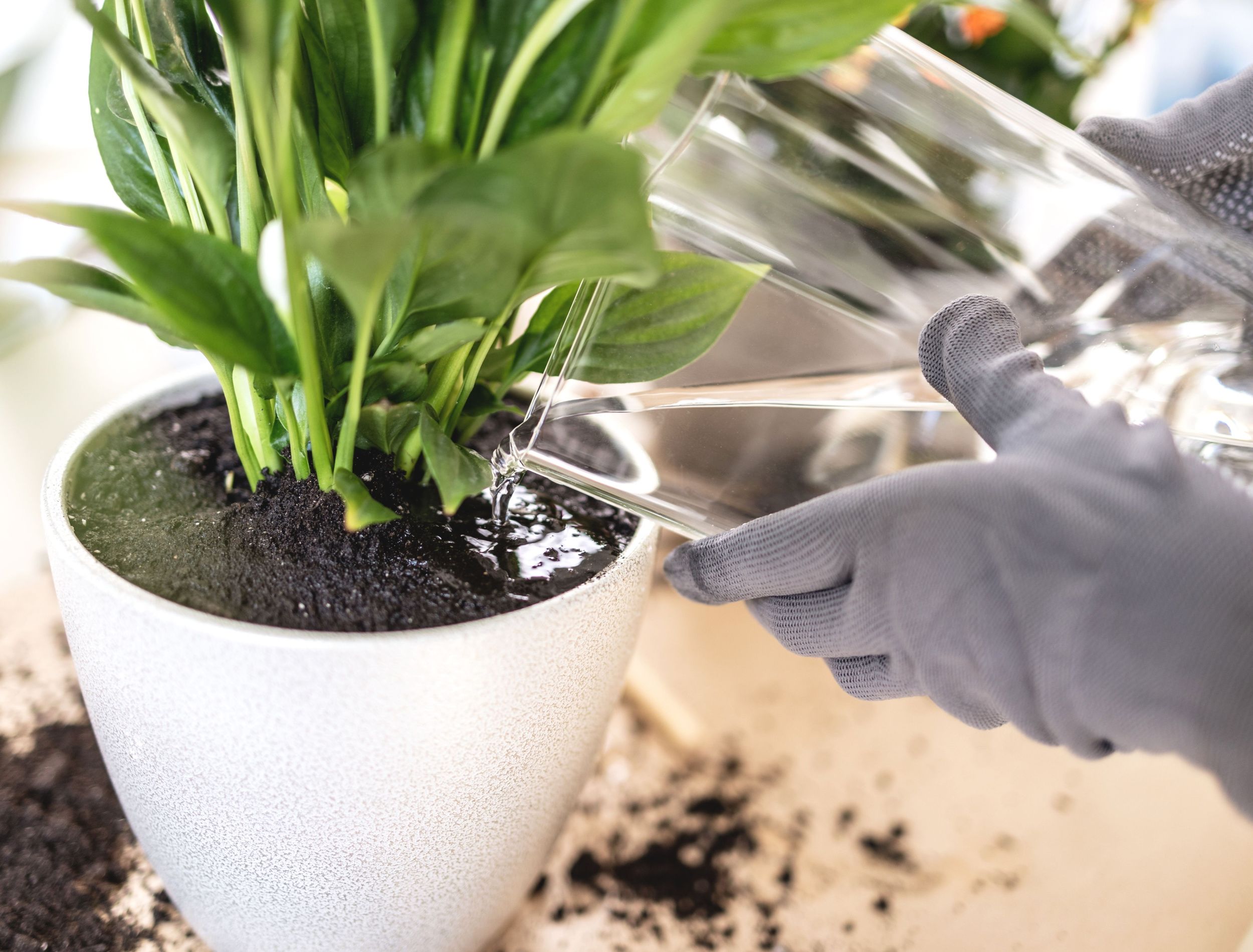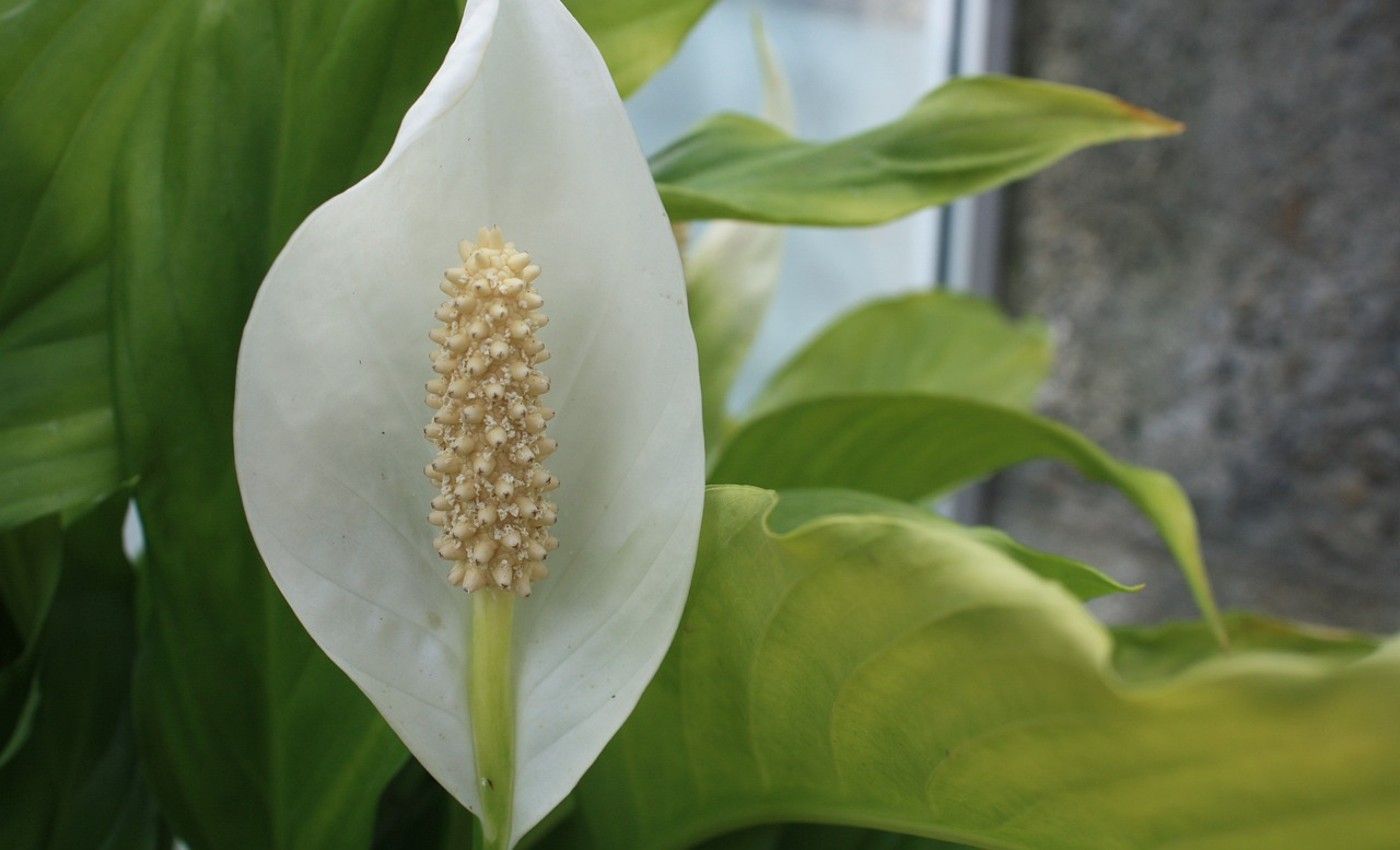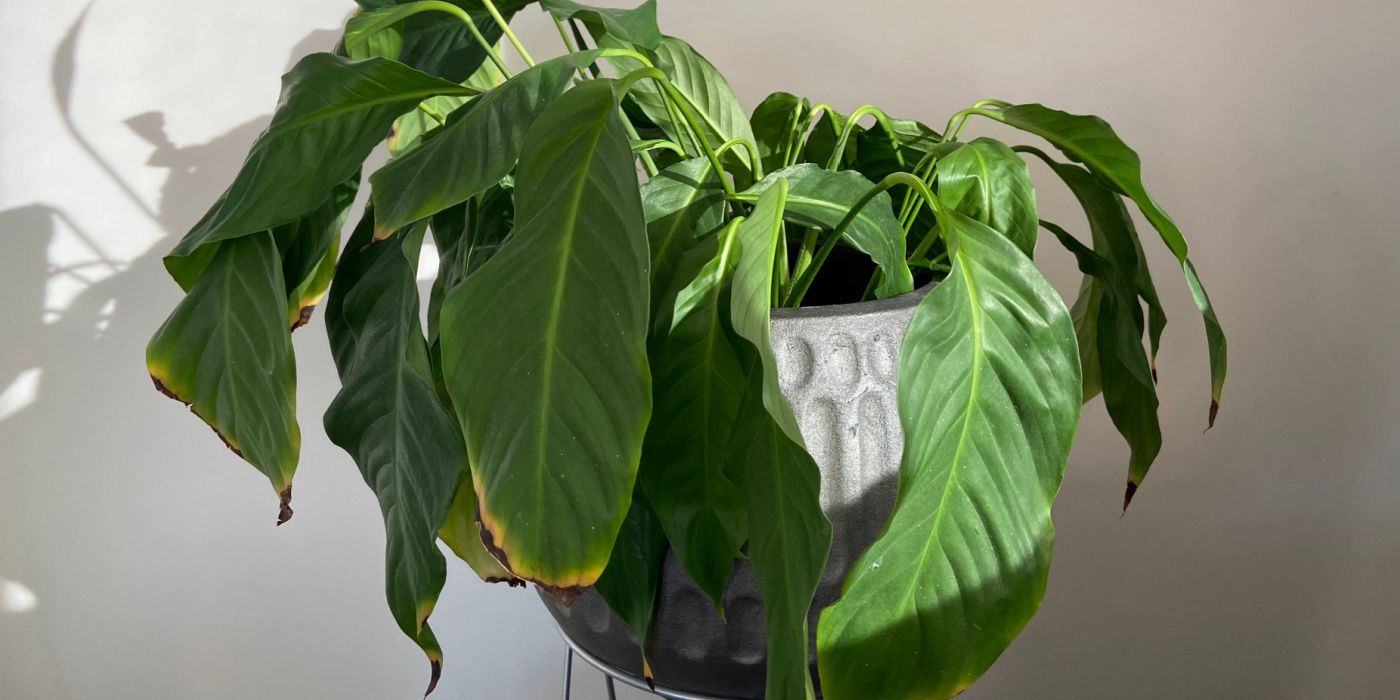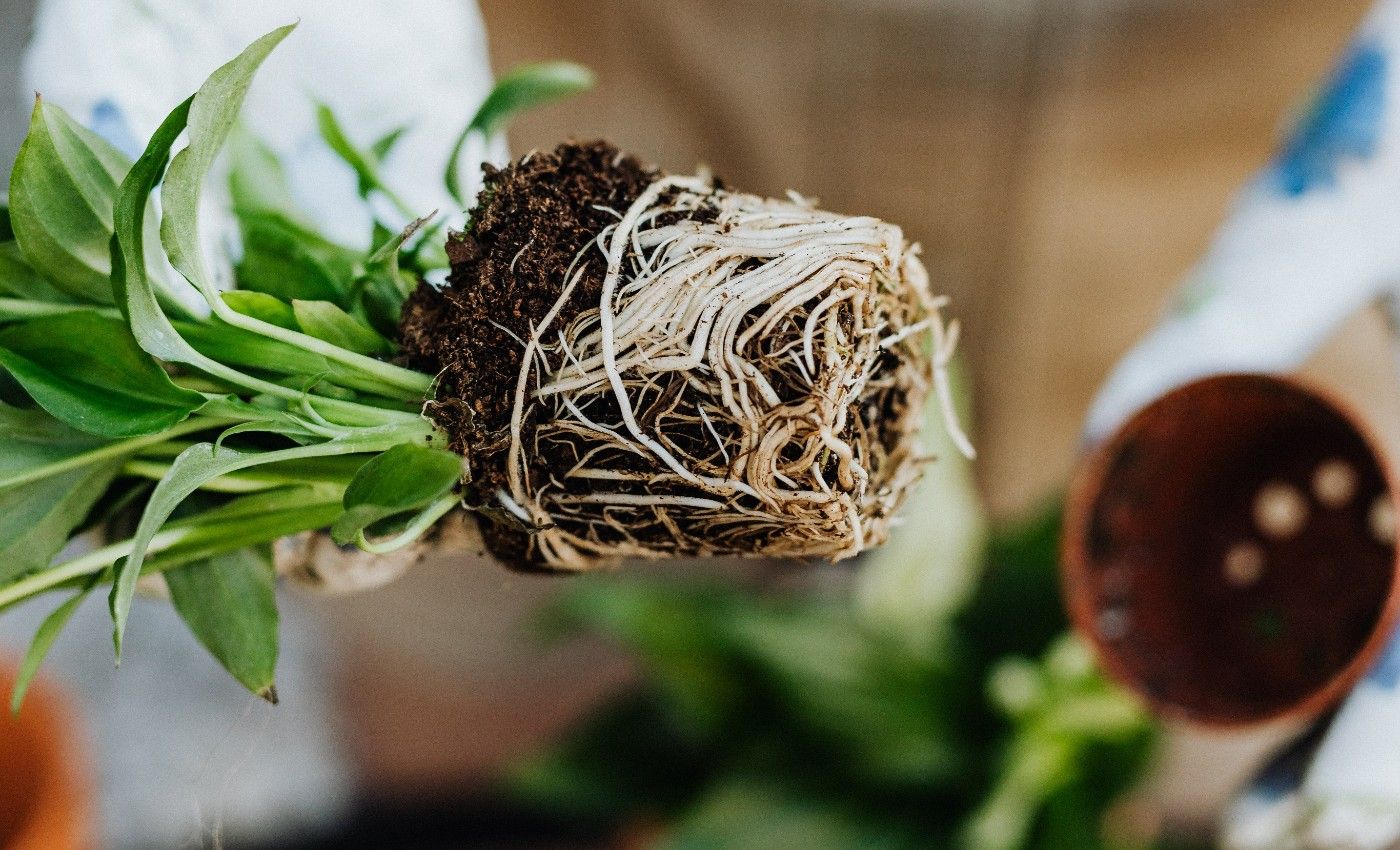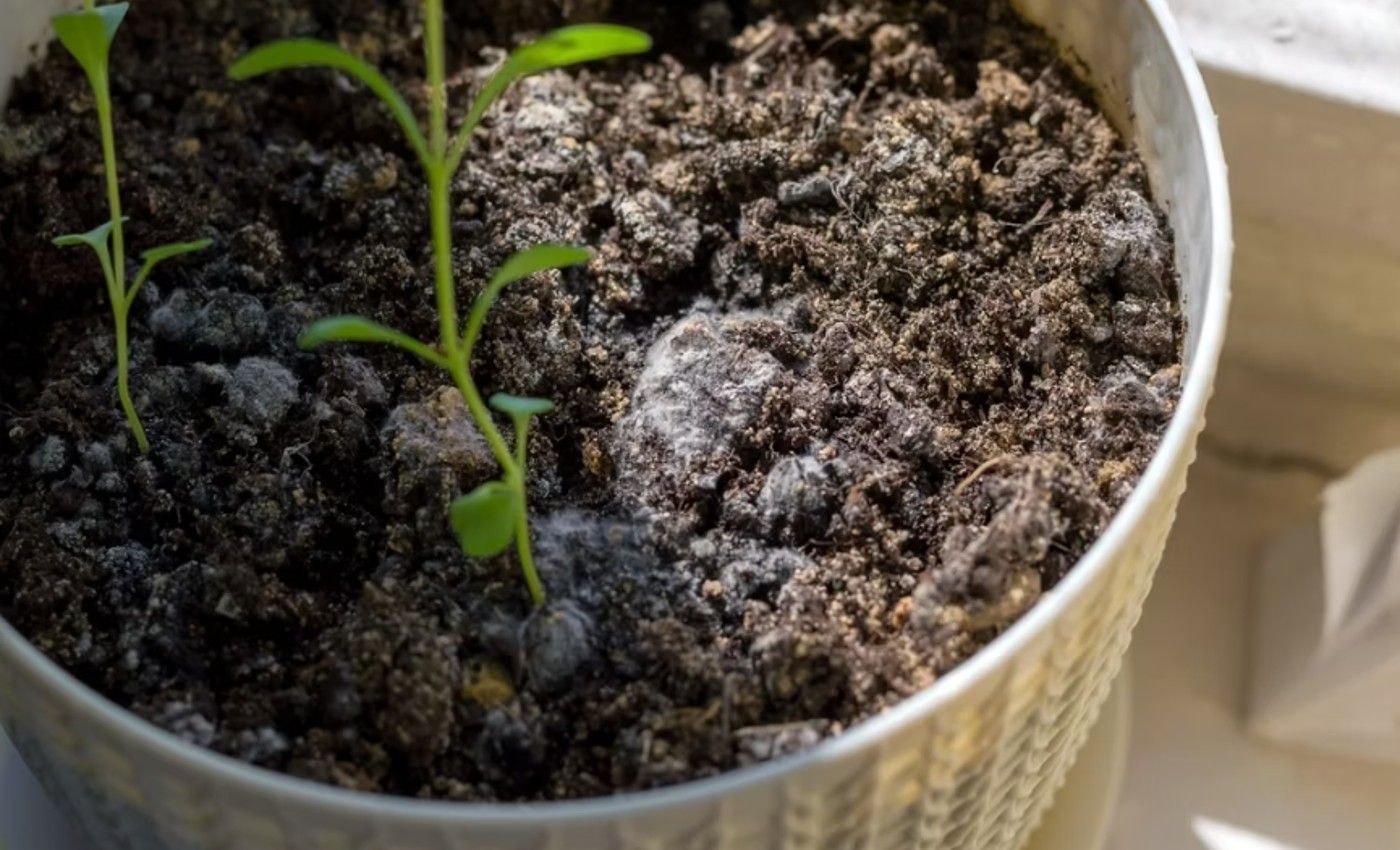Key Takeaways
- Overwatering peace lilies can result in yellowing leaves. Wait for the soil to dry out and establish a regular watering routine to prevent overwatering.
- Wilting or drooping leaves that curl inwards can indicate that the peace lily has been overwatered. Check the soil moisture level and hold off on watering until it recovers.
- Consistent overwatering can lead to root rot, a fungal disease that can be fatal for the plant. Avoid overwatering by ensuring adequate drainage and replanting if root rot occurs. Regularly check for moldy soil as well.
Peace lilies (Spathiphyllum) are increasingly popular houseplants, adored for not only their looks but for their ability to purify and cleanse the air. This tropical plant is from the Araceae family and has over 40 different species to choose from. With long-lasting white blooms and glossy dark green foliage, it's easy to see why these flowering plants are an obvious choice for plant lovers everywhere!
While they are considered low-maintenance houseplants, the most common mistake people make when caring for their lilies is improper watering. Overwatering peace lilies can lead to a variety of problems and there are a few tell-tale signs to look for.
But, not to worry, overwatering your plant is usually something you can resolve! First, understand the signs and symptoms of overwatering, along with a few solutions to prevent it going forward. Below are four signs that you may be giving your peace lily plant too much water and how to fix it, so your houseplant continues to flourish and thrive!
1 Yellowing Leaves
Look out for leaves that are turning yellow
The most common sign that you have been overwatering your peace lily plant is yellowing leaves. If you notice the leaves starting to turn yellow, it probably means you have given the plant too much water.
- Peace lilies can survive for a few weeks without water. However, it's best to maintain a regular watering schedule to ensure the plant gets water frequently and not sporadically.
- If you think you have overwatered your plant, wait for the soil to dry out. Leave the plant in a bright location and create a regular watering routine going forward.
- Water your peace lily once or twice a week during the warmer months, when it is actively growing. During the wintertime, the plant goes into a state of dormancy and is no longer putting out new foliage and flowers. During this time, reduce watering to once every two weeks.
- To be certain, always check the soil first to ensure the plant requires a drink. If the top 2 inches of soil feels dry to the touch, give the plant more water.
It's important to note that sometimes older leaves will turn yellow and die off near the bottom of the plant. This process is completely normal and is part of the plant's natural life cycle to lose its leaves over time, so it doesn't mean you have overwatered your peace lily. To identify if you have made a mistake and given your plant too much H2O, look for multiple yellowing leaves throughout the plant along with overly wet soil.
Peace lilies are sensitive to chlorine that can be found in tap water. Instead, water your peace lilies with rainwater, or treat and filter your current tap water to reduce the chemical levels.
2 Wilting Leaves
Drooping leaves that curl inwards often means too much water
Another sign you have given your peace lily plant too much water is wilting or drooping leaves that curl inwards. Sometimes plant owners get confused and think wilting leaves indicate that the plant is not getting enough water. By mistake, they continue to overwater their plant, causing even further damage. Occasionally, underwatering can cause wilted leaves, but to confirm this, check the potting soil first.
- To determine if the plant is wilting from too much water, put your finger in the soil about 2 to 3 inches deep. The potting soil shouldn't be too saturated, it should only be slightly moist to the touch.
- If your peace lily is wilting and the soil is very wet, it might indicate that you have overwatered the plant, causing the roots to rot.
- If overwatered, peace lilies will only survive for a couple of weeks before the plant completely dies off. Keep an eye out for overly wet soil and droopy leaves, so you can correct the issue right away. Hold off on watering your plant again until it recovers.
3 Root Rot
Consistently overwatering your peace lily may lead to root rot
Unfortunately, if overwatering persists, peace lilies can experience root rot if you consistently give them too much water. Root rot is a fungal disease that is a serious problem for any plant and is usually fatal. Often, this disease causes the plant to completely die off.
- Common signs of root rot include wilting or drooping leaves, stunted plant growth, and a brown or black stem.
- To identify root rot, look at the roots of the plant. To check for this, carefully remove the plant from its container and inspect the roots to see if they appear black or brown and are soft to the touch. Another clear indication is roots that have a rancid smell.
- If only certain roots appear to be diseased or smell bad, simply trim the infected roots and remove them. Afterward, dispose of the current potting soil and replant your peace lily in a new container with sterile soil.
- Be careful when removing the infected roots and avoid trimming any healthy-looking roots that appear white and firm.
Unfortunately, sometimes root rot is not treatable, and your plant cannot be saved. While this is disheartening, knowing the many signs allows you to prevent this from happening again in the future.
One of the best ways to prevent root rot is to plant your peace lily in a container with adequate drainage holes. When watering, make sure water doesn't build up at the bottom of the container and instead allow it to drain from the pot. Going forward, ensure you stick to a regular watering routine!
4 Moldy Soil
Overly wet, water-logged soil encourages mold to grow
The last thing to check for when determining if you have overwatered your peace lily is moldy potting soil. Mold loves to grow in moist, damp environments, and your potting soil is no exception.
- Plants that regularly receive too much water can grow mold on the top of their soil due to the excess moisture. In turn, this causes damage to the plant and can stunt its growth if not remedied in time.
- Mold growth also removes vital nutrients from the soil, along with leaving your plant more susceptible to disease. Overall, it's something you don't want to see growing on your potting soil.
- Another reason your soil may be moldy is caused by cheap potting soil. When planting, opt for high-quality potting soil from a reputable source.
- If you notice mold growing, immediately remove the mold from the top layer of soil and allow it to dry out. If the mold growth is bad enough and your peace lily seems to be significantly suffering, repot the plant and give it fresh potting soil.
To prevent overwatering and moldy soil, bottom water your peace lily plant. To do this, use a tray or container filled with water and place your pot inside. Wait a few minutes, allowing the roots to soak up the water from the bottom. Next, remove the pot from the tray and let it drain.
Stop Excessive Watering For Good
When it comes to watering your houseplants, sometimes less is more! Always check the soil moisture in your peace lily regularly to prevent overwatering the plant. If overwatering is an issue for you, create a regular watering schedule and set reminders for yourself on when to water next. When in doubt, purchase a moisture meter that tells you exactly how much moisture is in the soil. Test your soil weekly and water your plant as needed for healthy, thriving foliage.

